Did You Know?
The shrine's intricate Kashi Kari tilework, featuring vibrant blue and yellow hues, symbolizes the mystical themes of unity and divine love found in Sachal Sarmast’s poetry, visually embodying his Sufi philosophy.
27°18'20.8"N 68°30'46.4"E
The shrine's intricate Kashi Kari tilework, featuring vibrant blue and yellow hues, symbolizes the mystical themes of unity and divine love found in Sachal Sarmast’s poetry, visually embodying his Sufi philosophy.
The Best Time to Visit Sindh Province is Winters. Preferably from September to April Peak Summers (May to August) can get extremely hot with temperatures reaching higher than 40 °C . Hence Summers are not recommended.

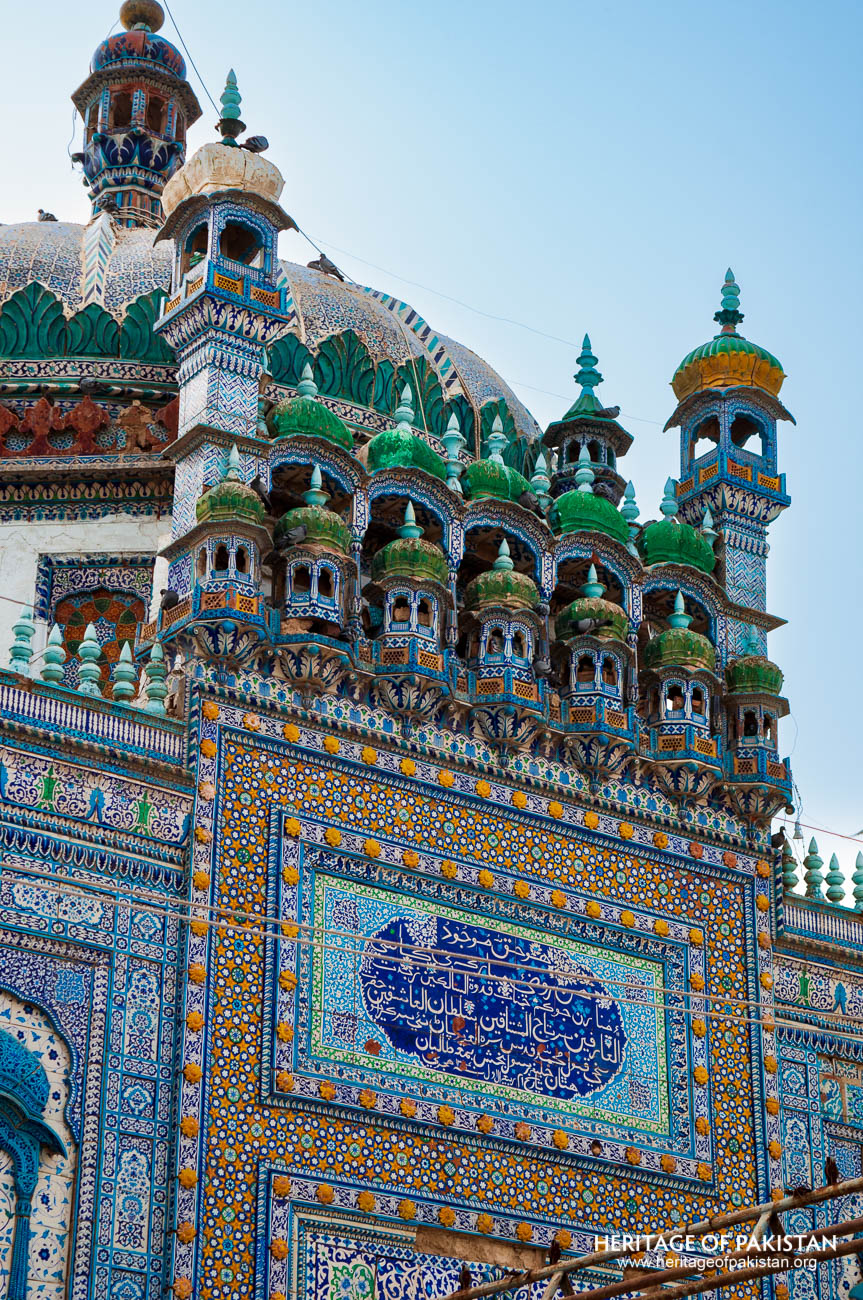
The Shrine of Sachal Sarmast is a highly revered Sufi shrine located in Daraza Sharif, a village near Ranipur in the Khairpur district of Sindh, Pakistan. It is dedicated to the 18th-century Sufi mystic and poet Sachal Sarmast, who remains one of the most celebrated Sufi saints of the region.
Sachal Sarmast was born in 1739 in Daraza Sharif, a village situated between Gambat and Ranipur. His birth name was Abdul Wahab Farooqi, named after his great-grandfather. He belonged to the Farooqi lineage of mystics, also known as the' Darazai Dervishes' belonging to the Darzai Sufi school of thought. He was known as 'Sachal Sarmast'. ‘Sachal’ meaning ‘Truthful’ and ‘Sarmast’ meaning ‘Ecstatic,’ with Sachal Sarmast meaning 'Truth speaking Ecstatic.'
Following the death of his father when he was six years old, Sachal Sarmast was raised and mentored by his uncle, Khwaja Abdul Haq I, who also became his spiritual guide and later his father-in-law. Under his guidance, Sachal Sarmast memorized the Holy Quran, earning him the title ‘Hafiz Darzai.’ By the age of twelve, he had attained proficiency in various fields of knowledge.
According to historical tradition, the esteemed Sindhi Sufi poet Shah Abdul Latif Bhittai once visited Daraza Sharif to pay respects to Khwaja Muhammad Hafiz, the patron master of the Darzai Sufi order. During this visit, Bhittai encountered the 7 year old Sachal Sarmast and, impressed by his spiritual depth, predicted that the child would one day unveil divine secrets that even he had chosen to keep concealed. This prophecy was later fulfilled as Sachal Sarmast emerged as one of the most profound and fearless exponents of Sufi philosophy.
During his youth, Sachal Sarmast led a largely solitary and contemplative life, ultimately attaining divine enlightenment. He described his transformation in his own words:
"For many years, I was a strict religious man. I counted the beads of the rosary regularly. I was fully occupied in the mosque and sacred writings. I passed many years in penance and austerity. I spent most of my time in abstinence, discipline, and chanting the divine names. Everybody appreciated me a lot for doing so. But one day, I happened to be in the presence of Master Abdul Haq and abandoned everything except eternal union. He dipped me into the Ocean of Unity and filled my heart with the treasure of divine pain. He blessed me with excessive love and sainthood and gladdened my barren heart with eternal joy."
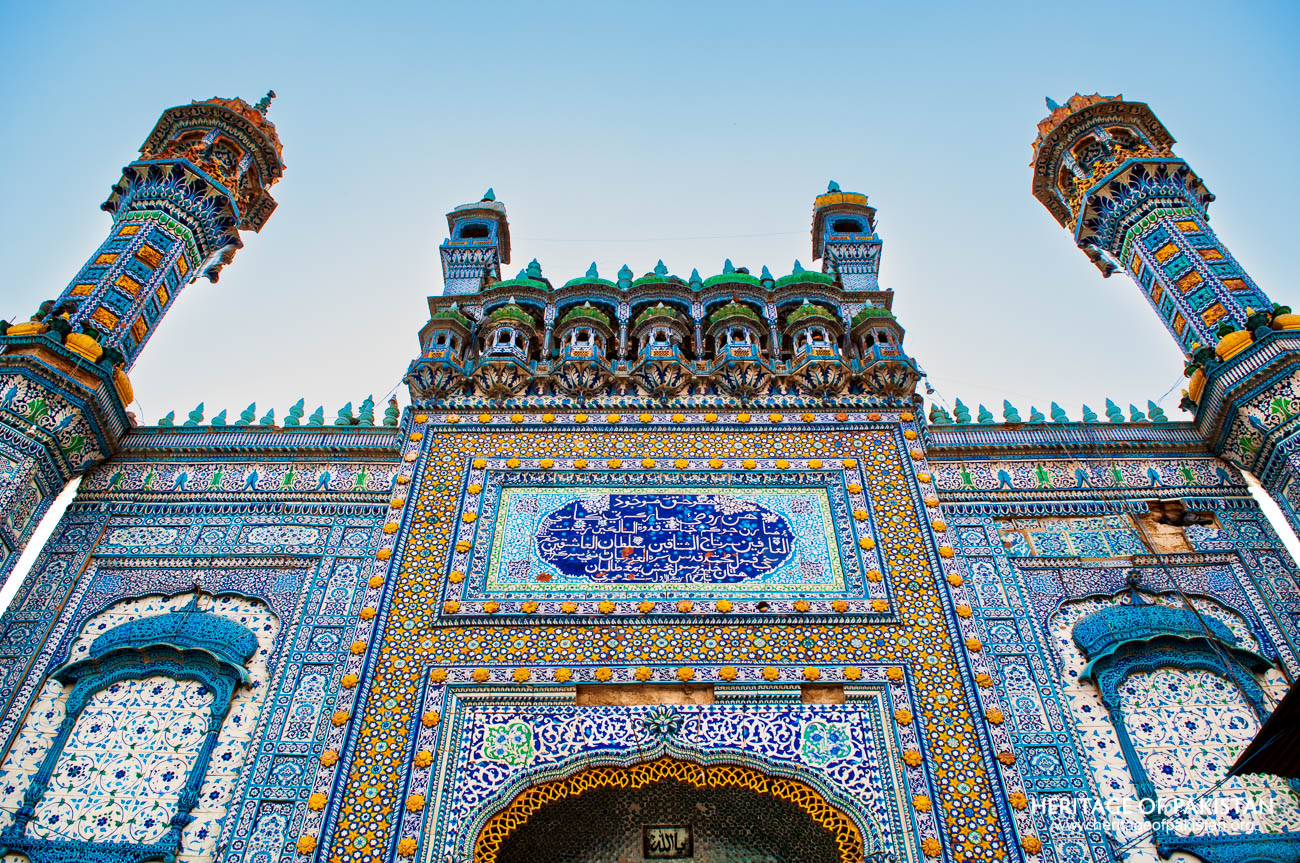
Facade of Shrine of Sachal Sarmast, Daraza Sharif, Sindh
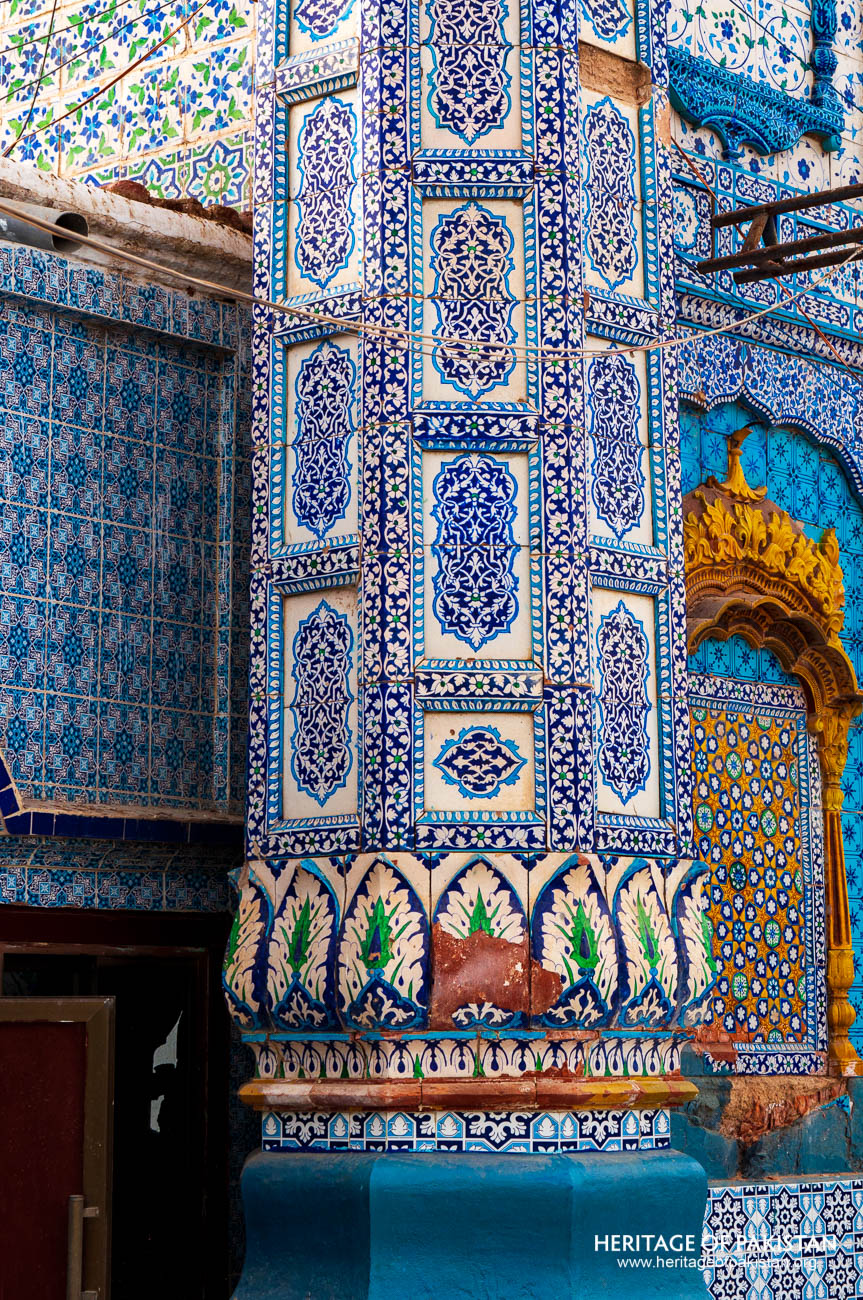
Base of Minaret of the Shrine
Sachal Sarmast remains one of the most distinguished Sufi poets and saints of Sindh. He composed poetry in multiple languages, including Sindhi, Siraiki, Persian, and Urdu. His works, deeply embedded in the folk traditions of Sindh, continue to be celebrated in devotional music and poetry. Some of his notable literary contributions include Diwan Ashkar, Masnavi Dard Nama, Masnavi Wahdat Nama (Song of Unity), Diwan-i-Khudai (Poetry of Divinity), and Nukta-i-Tasawwuf (Mystic Teachings). In Urdu poetry, he was a master of both the Ghazal and Kafi forms, bringing a new vibrancy to these literary traditions.
Sachal Sarmast was known for his revolutionary and intense Sufi beliefs, particularly his advocacy of Wahdat-ul-Wujud (Unity of Being), a philosophy asserting the interconnectedness of all existence. His ideas were deeply influenced by earlier Sufi thinkers such as Mansur Al-Hallaj and Farid ud-Din Attar, of Nasharpur earning him the titles ‘Mansur Sani’ (The Second Mansur) and ‘Attar of Sindh.’
His reverence for other religious traditions was evident in his actions and teachings. He instructed one of his disciples, Faqir Nanak Yousaf, to visit the Golden Temple in Amritsar as a mark of respect for Sikhism. In honor of Guru Nanak, he referred to his disciple as ‘Nanak Yousaf.’
Sachal Sarmast passed away in Daraza Sharif on the 14th of Ramadan in 1825 AD. His tomb is believed to have been constructed by Mir Rustam Khan Talpur, one of the Talpur rulers. Later, the mausoleum was renovated and adorned with Kashi Kari glazed tiles by Sakhi Qabool Muhammad II.
Sachal Sarmast remains one of the most revered Sufi Saints of Sindh.

Eastern facade details of the Shrine

The Shrine of Sachal Sarmast is a remarkable example of Islamic Sufi architecture, reflecting both traditional Islamic funerary design and influences from Sikh and Mughal architectural styles. Constructed by Mir Rustam Khan Talpur, a ruler of the Talpur dynasty, the shrine was later renovated and adorned with intricate Kashi Kari (glazed tilework) by Sakhi Qabool Muhammad II. The structure exhibits a unique blend of artistic elements, particularly in its use of vibrant tilework and ornamental detailing.

Kashi Kari on the facade of the Shrine
The shrine follows a square-based architectural plan, forming a cuboid structure with four octagonal minarets, each positioned at a corner of the main cuboid building. These minarets, which taper upwards in three sections, are crowned with domes that reflect a synthesis of Sikh and Mughal influences. The exterior of the minarets is covered with Kashi Kari, incorporating a striking combination of blue, white, and yellow tiles. The motifs adorning the tilework include intricate geometric patterns and floral designs, which enhance the visual harmony of the structure.
The central square hall is crowned with a fluted dome, resting on an octagonal base with a flower petal design, reminiscent of architectural features found in Sikh shrines. The eastern elevation, which houses the main entrance, is the most richly ornamented part of the shrine. The pishtaq (arched entrance) is adorned with elaborate stucco work, featuring floral motifs, calligraphic inscriptions, and epigraphic content. A Kashi Kari panel positioned above the entrance provides historical information about the shrine. The stucco detailing is further highlighted with gold and yellow paint, accentuating its artistic prominence.
The exterior of the shrine is entirely enveloped in Kashi Kari tilework, representing one of Sindh’s most distinguished indigenous crafts. The dominant color is blue, complemented by yellow and white, which together create a visually striking composition. Various geometric patterns, including octagonal and pentagonal tiles, as well as five- and ten-pointed stars, contribute to the intricate decorative scheme. The Islamic symbol "Rub el Hizb," an eight-pointed star or octagram, is prominently featured in the niches flanking the main doorway, reinforcing the shrine’s symbolic and spiritual significance.
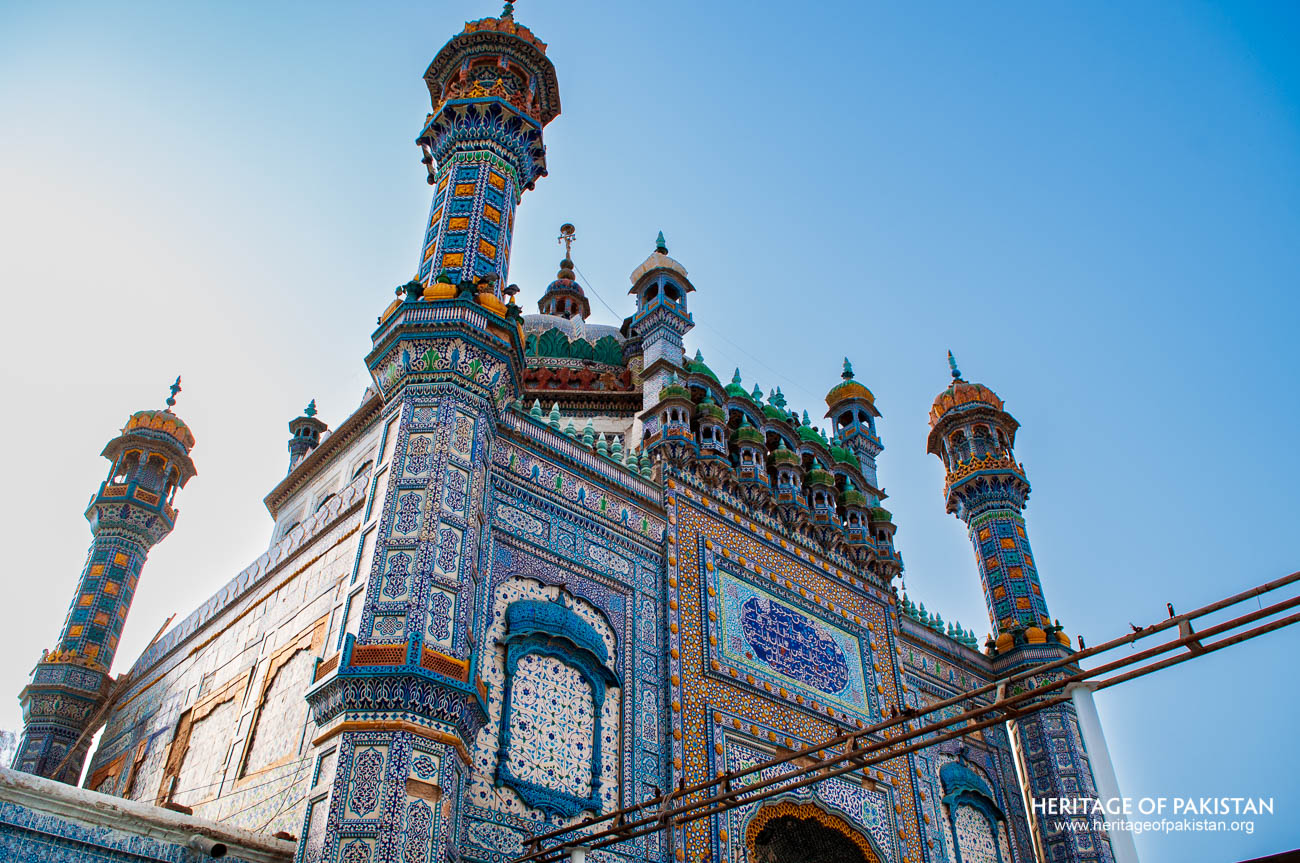
The shrine complex includes multiple functional spaces, such as a central courtyard, an adjoining mosque, and various visitor facilities. The open courtyard serves as an essential space for religious and cultural gatherings, where devotees engage in Sufi musical recitations (Sufi Kalam), Dhamal (a devotional Sufi dance), and Langar (a communal meal tradition). Qawwals, seated in the courtyard, perform Sufi songs, preserving the shrine’s long-standing tradition of mystical poetry and spiritual expression. Through its architectural grandeur and continued cultural practices, the Shrine of Sachal Sarmast remains a significant landmark in the spiritual and artistic heritage of Sindh.
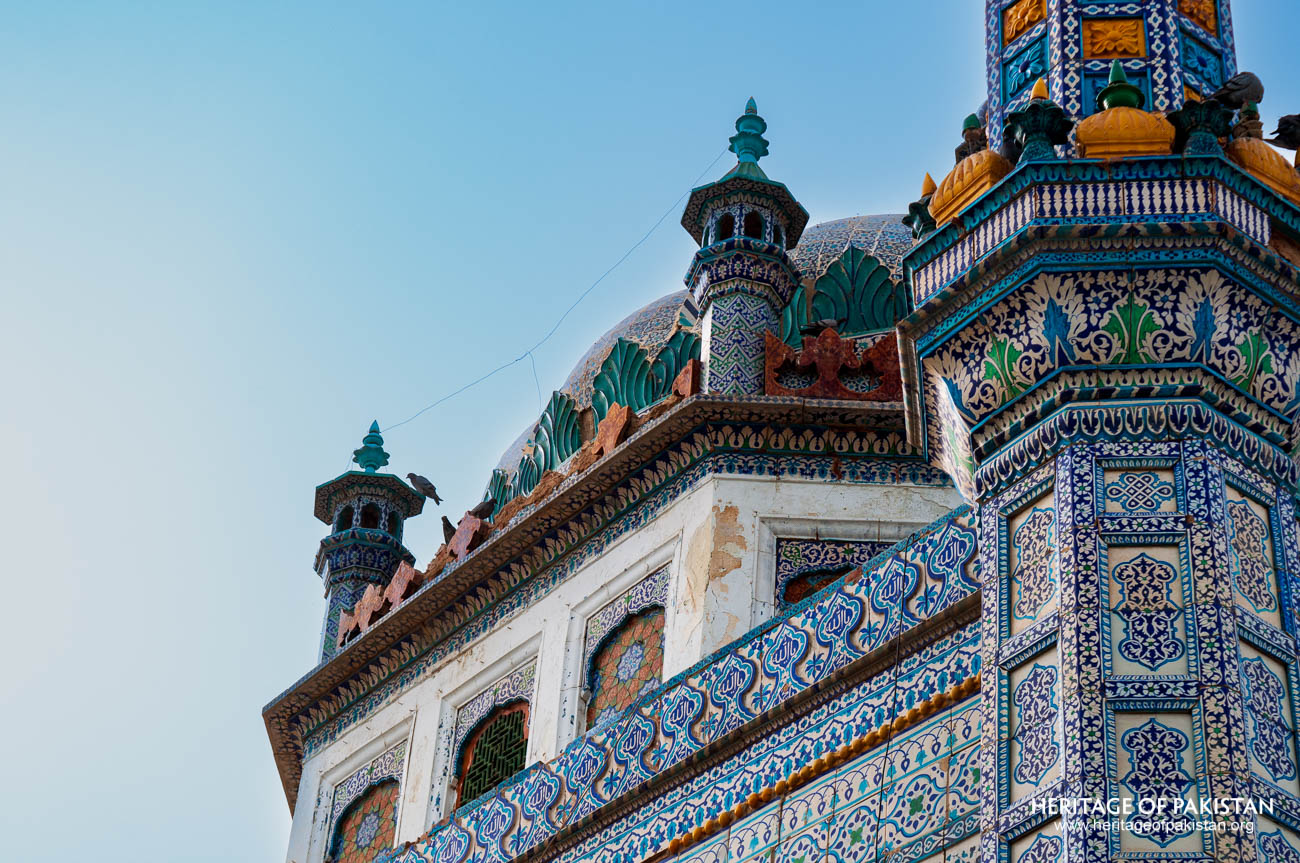

Discover the Shrine of Sachal Sarmast image gallery and immerse yourself in photographs

All Photographs by Syed Noor Hussain and Sania Azhar.
All Rights Reserved. Photos may be used for Non-Commercial, Educational, Artistic, Research, Non-Profit & Academic purposes.
Commercial uses require licensing agreement.


Add a review